Shorten the development cycle of wireless communication design with simulation and App
The 5G mobile network and Internet of Things (IoT) are two hot topics in the RF and microwave industries. In order to make new progress in such wireless applications, it is necessary to greatly increase the data transmission rate, while also requiring acTIve electronically scanned arrays (AESA), phased array antennas, and multiple input and multiple outputs ( A major breakthrough was made in mulTIple-input-mulTIple-output (MIMO) technology. In the prototyping and manufacturing process of the above applications, it is important to reduce time and cost. With simulation and App, we can shorten the development cycle of wireless communication design.
Advanced computing resources used in the design of 5G phased array antennas
As we discussed in previous blog posts, there are many improvements and design considerations to implement for 5G mobile web applications. One of the improvements in RF engineers is to increase the antenna gain to provide higher frequencies for 5G operation.
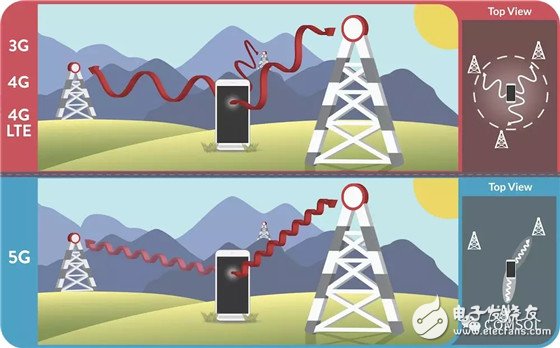
An isotropic low gain antenna for early networks is compared to a directional high gain antenna for 5G.
Another requirement for 5G mobile networks is to improve phase advancement techniques. This technique can be used to form the radiation pattern and direct the direction of the antenna array beam to control the input signal, thereby solving the coverage angle problem.
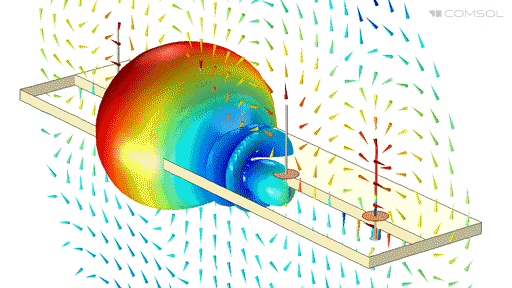
A monopole phased antenna array can direct radio waves to a specified direction.
In the design phase, a device called a slot-coupled microstrip patch antenna array can be used to address such coverage angle issues. However, in order to develop devices that optimize 5G wireless communication performance, many complex design parameters need to be considered.
It is often difficult to evaluate and apply physical effects (such as extreme temperature changes, structural deformations, and chemical reactions) through physical prototypes in design laboratories, but simulations are adequate. Unfortunately, not every engineer who works on the design is a simulation professional, which requires that every time the antenna array design or simulation environment changes, the simulation professional must participate in every step of the design process.
The App Builder solves this type of problem by further extending the simulation capabilities. Now, a complex and cumbersome RF design numerical model can be converted into a user-friendly interactive tool that can be easily used by both professionals and end users. Today, let's explore the Slot-Coupled Microstrip Patch Antenna Array Synthesizer Simulation App to see how it helps us optimize the phased array antenna design for 5G and IoT.
Use Slot-Coupled Microstrip Patch Antenna Array Synthesizer App
Active electronically scanned arrays, also known as phased antenna arrays, are commonly used in military applications such as radar and satellite. Nowadays, with the ever-increasing demands on the data transmission rate of communication devices, such arrays have a new application field - commercial applications. In such devices, the size of a simple component can easily exceed dozens of wavelengths, which results in a large amount of memory in the simulation design. The result is that even if we only get the approximation used to evaluate the conceptual model, it takes a considerable amount of computation time. Faster prototyping helps to quickly analyze performance and determine design parameters.
The slot-coupled microstrip patch antenna array synthesizer is based on a finite element method (FEM) model of a single microstrip patch antenna, and is a low-temperature cofired ceramic (LTCC). Made on the substrate. The device's initial operating frequency is 30 GHz, and the integration of the radiation pattern with the directional analysis of the entire array structure is accomplished using COMSOL MulTIphysics and its powerful post-processing capabilities. The App Developer is a shortcut that provides a variety of ways to design and build a user-friendly graphical user interface (GUI) that transforms common mathematical models into intuitive simulation tools.
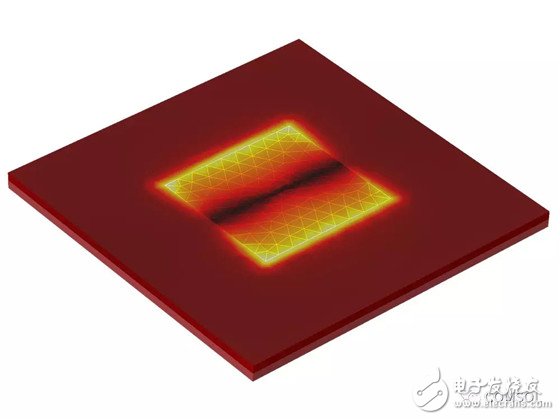
Top view of the slot coupled microstrip patch antenna.
The App Builder provides two must-have tools for creating apps: the form editor and the method editor. With the form editor, we can add form objects to the custom interface to give the GUI some simple features. The Method Editor helps us perform more advanced customization than form objects. After accurately simulating a single microstrip patch antenna, we found a two-dimensional antenna array factor.

The two-dimensional array factor corresponds to user inputs such as array size, phase equal-difference series, and angular resolution, which are applied to the radiation pattern data (emw.normEfar) of a single antenna.
The Method Editor is not only suitable for simple simulations that visualize predefined post-processing variables, but also for further customization.

A preview of the main form used to display the form object.
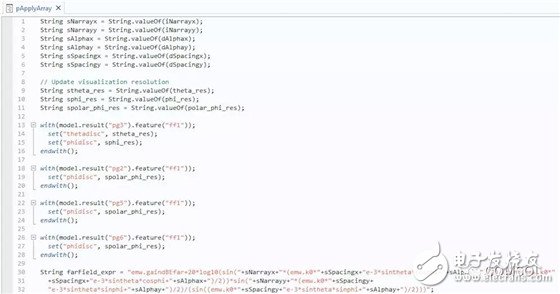
Use the Method Editor to create custom actions for form objects.
In this app, there are a number of design parameters that can be used to test the microstrip patch antenna array design, including:
Antenna attribute
Patch size
Substrate size
Gap size
Feeder width
Extended feeder length
Patch substrate thickness and relative dielectric constant
Feeder substrate thickness and relative dielectric constant
Array attribute
Array size
Forward
spacing
Simulation attribute
frequency
wavelength
3D coordinate drawing resolution
Polar coordinate drawing resolution
The array dimensions, phase advances and spacing, and the distance between each cell are primarily used to characterize the shape and orientation of the antenna array radiation pattern. Angular resolution enhances the visualization of 3D and 2D radiation patterns. Note that when the antenna directivity is high, a higher resolution helps to accurately depict the side lobes.
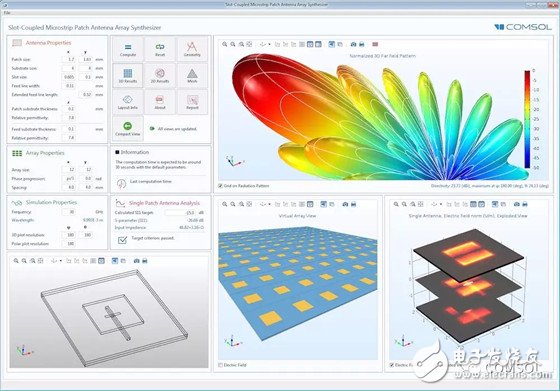
Graphical user interface for the “Slot Coupling Microstrip Patch Antenna Array Synthesizer†app.
After the analysis is completed, the App compares the single antenna design parameters calculated by the S parameter (S11) with the user's “pass/fail†evaluation criteria before running the simulation to report whether it is the best parameter. The App plots the electric field distribution on each of the dielectric and metal layers and visualizes the full view of the array, giving App users a more intuitive experience of design performance. You can also choose to generate a complete simulation results report along with detailed app instructions.
Simulation App provides unlimited possibilities for the display of numerical models
With the App Developer, you have an infinite number of ways to turn your model into a custom tool, but what can you do next? You can launch and use the simulation app with COMSOL Multiphysics® software. As long as you are connected to the Internet, you can run your app using a common web browser and even deploy your app to a colleague or customer via the COMSOL ServerTM product.
In the “Case Downloadâ€, there are more apps in the physical fields of electrical, mechanical, fluid, chemical, etc. waiting for you to download and research. These demo apps can guide you through the creation of your own practical app.
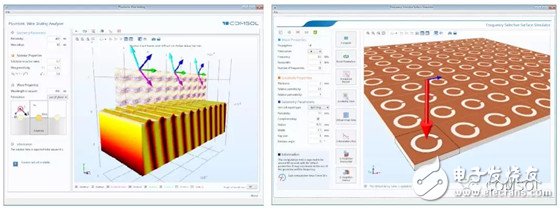
The frequency selective surface periodically complements the open-loop resonator" demo App (right) and the "surface plasmon grating simulator" demo app (left).
Whether you are developing a simulation app for enhanced RF design for 5G networks, or working on other application areas, start developing simulation apps today to optimize your design workflow and product performance!
Easy Electronic Technology Co.,Ltd , https://www.yxpcelectronicgroups.com